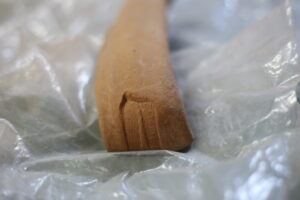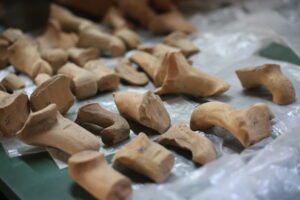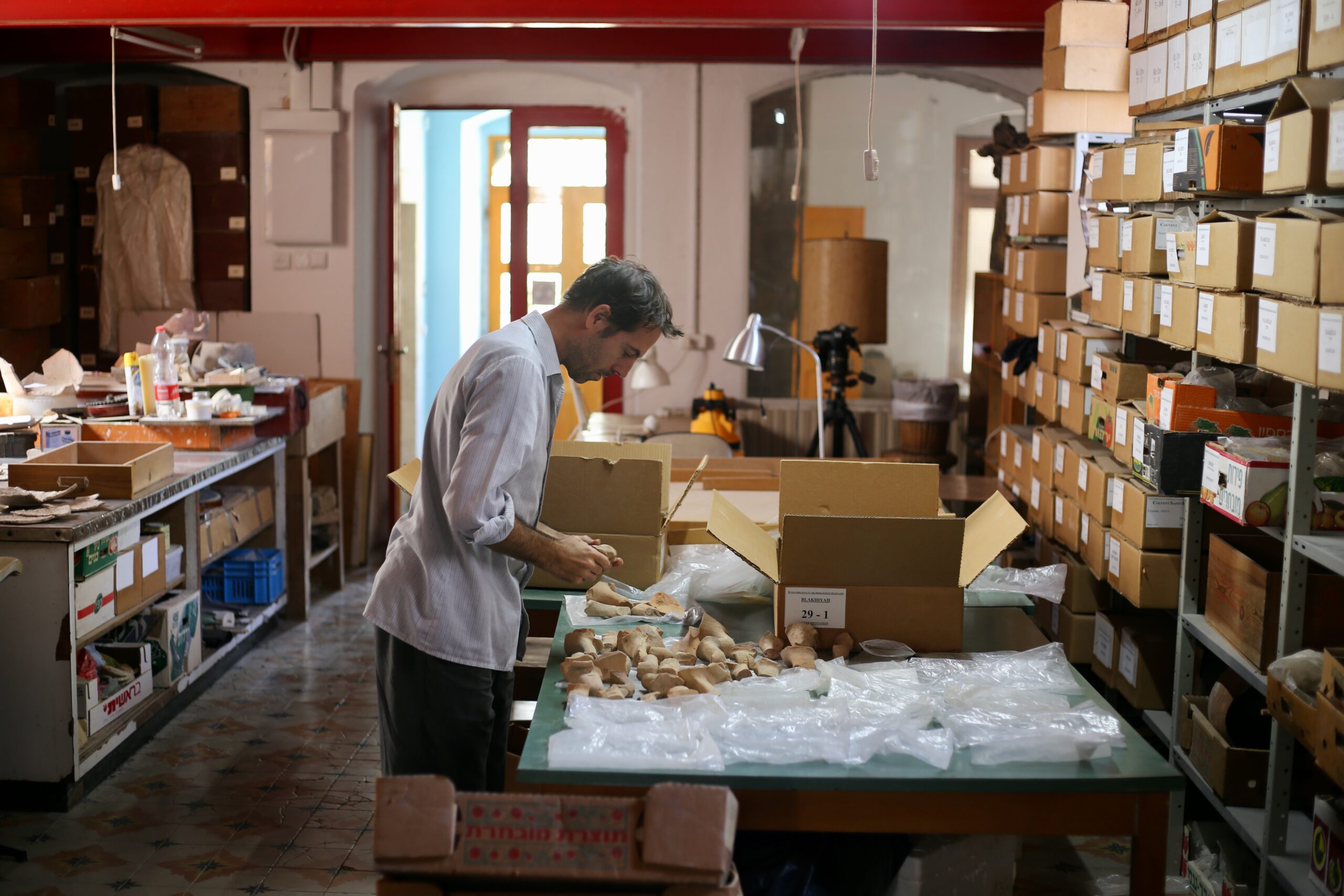Kevin Tréhuédic, a former member of the École Biblique et Archéologique Française and a lecturer in ancient history at the University of Créteil, is a specialist in the Hellenistic world. He honoured the School with a visit in September.
Already familiar with the pieces under study, the cataloguing of which had begun before the troubled years of the epidemic, Kevin returned to Jerusalem for a few weeks to complete the work and contribute to the writing of a book due for publication in 2024: Timbres amphoriques en Palestine I. Gaza (Anthédon / Blakhiyeh). Volume II is planned, based on the collection of the White Fathers of Sainte-Anne (500 stamps).
The collection studied includes no fewer than 350 amphora handles dating from the Hellenistic period, from the Blakhiyeh site, excavated by the EBAF under the direction of Friar Jean-Baptiste Humbert in collaboration with the Palestinians, as well as the archives of two Gazan collectors. The fragments bear stamps, most likely affixed to the amphorae for tax purposes.
But the information is not easy to decipher. Like the numbers on wine bottles today, the stamps were often printed on a line and were not intended to be read. Kevin has therefore worked from photographs, then enlarged on a screen, to decipher the name of the manufacturer, or a symbol of the city of origin of the amphora. On some handles, you can read the name of the priest of the Sun in Rhodes, which changes every year, to find out when the amphora was made. On other handles, the insignia of a god worshipped in the place of origin can be traced back to its geographical origin.

Heracles’ club can be seen here, linking the cove to the city of Thasos, where the god was worshipped.
The investigation can also be complicated by homonyms. Faced with multiple “Pausanias” or “Damokratès” names, it is necessary to return to the object and examine it. The shape of the handle is the key. In the 3rd century, the handle was more rounded; in the 1st century, it was more angular.
 All in all, this sample tells us about the wine trade in Palestine over 2,000 years ago. Three quarters of the fragments come from Rhodes, while a handful comes from other Greek cities in what is now Turkey or Cyprus. These stamps are the oldest from Palestine, showing that the port of Gaza was connected to trade with the Aegean world.
All in all, this sample tells us about the wine trade in Palestine over 2,000 years ago. Three quarters of the fragments come from Rhodes, while a handful comes from other Greek cities in what is now Turkey or Cyprus. These stamps are the oldest from Palestine, showing that the port of Gaza was connected to trade with the Aegean world.
In Byzantine times, Gaza produced a renowned wine and exported it well!
